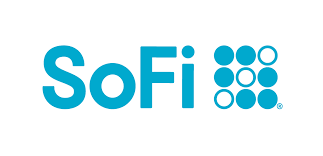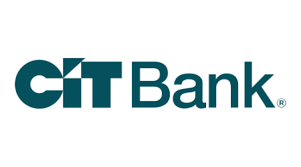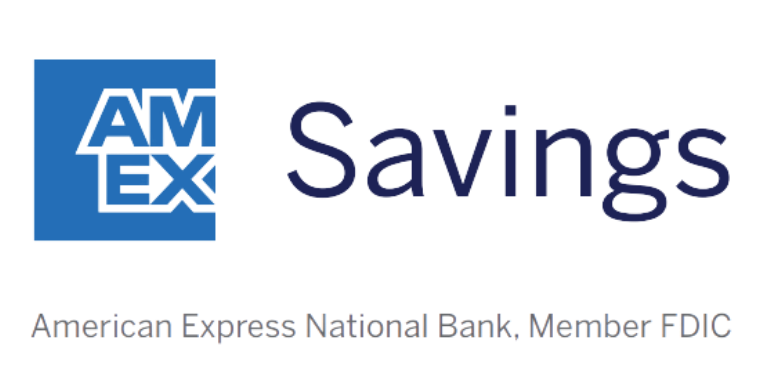The debt snowball method is one of two big debt payoff strategies endorsed by money experts like Dave Ramsey. It helps you get out of debt fast by keeping you motivated. It seems counterintuitive, but for many Americans, it actually works.
But is the debt snowball method the best way to become debt-free? Here's how it works and stacks up to it's No. 1 competitor, the debt avalanche method.
What is the debt snowball method?
The debt snowball method is a debt payoff strategy that prioritizes keeping you motivated. It requires you to pay debts off from smallest balance to largest.
As each debt gets paid off, you roll over that freed-up money into the next debt. Your payments get larger as you go, just like a snowball growing as it rolls down a hill.
How to use the debt snowball method
First, you need to make the minimum payment for each of your debts. This is the amount you need to pay each month to avoid late fees or credit problems.
Next, consider how much extra cash you can put toward debt payments. The more money you can put toward paying off your debts, the faster it will go. (If possible, avoid taking on any new debt while paying off your existing debt.)
Order your debts by size, from the smallest balance to the largest balance. Any extra money should go to the debt with the smallest balance first.
Once you've paid off your smallest debt, move on to the second-smallest debt. All of the money you were putting toward your smallest debt should go to the next debt. This includes the extra money, plus the money for the minimum payment.
Every time you pay off a debt, roll over the money from that payment to the next debt. (In other words, you should always be putting the same total amount of money toward debt payments overall.) Tackle your largest debt last.
Example of the debt snowball strategy
Some things are easier to understand when you can see some numbers, so here's an example.
Let's say you have five debts, as in the table:
| Debt | Balance | Minimum Payment |
|---|---|---|
| A | $100 | $25 |
| B | $500 | $35 |
| C | $1,275 | $70 |
| D | $3,000 | $130 |
| E | $7,500 | $250 |
With the debt snowball method, you would follow these steps:
- Make the minimum payment for all five debts.
- Put any extra money toward Debt A.
- Pay off Debt A. Put all of the money you were using for Debt A toward Debt B.
- Pay off Debt B. Put all of the money you were using for Debt B toward Debt C.
- Pay off Debt C. Put all of the money you were using for Debt C toward Debt D.
- Pay off Debt D. Put all of the money you were using for Debt D toward Debt E.
- Pay off Debt E. You are now debt free!
In this scenario, you put $510 a month toward minimum monthly payments. Let's say you have enough money to make all of your minimums, plus an extra $50 a month.
For the first two months, you would pay a total of $75 toward Debt A. ($50 + the $25 minimum payment.) Within two months, you've paid off Debt A completely.
Next, you can begin to pay off your next-highest debt, Debt B. Your total monthly payment for Debt B becomes $75 + $35 = $110. (The money you were using to pay off Debt A, plus the minimum payment for Debt B.)
Paying off Debt B lets you put $180 toward Debt C. Paying off Debt C lets you put $310 toward Debt D. Paying off Debt D lets you put $560 toward Debt E, your biggest debt. Once you pay that off, you're debt free.
RELATED: See Motley Fool Money's debt snowball calculator to see which debts you should pay off first.
Compare savings rates
Make sure you're getting the best account for you by comparing savings rates and promotions. Here are some of our favorite high-yield savings accounts to consider.
| Account | APY | Promotion | Next Steps |
|---|---|---|---|

Open Account for SoFi Checking and Savings
On SoFi's Secure Website.
Rating image, 4.50 out of 5 stars.
4.50/5
Our ratings are based on a 5 star scale.
5 stars equals Best.
4 stars equals Excellent.
3 stars equals Good.
2 stars equals Fair.
1 star equals Poor.
We want your money to work harder for you. Which is why our ratings are biased toward offers that deliver versatility while cutting out-of-pocket costs.
|
up to 3.80%²
Rate info
You can earn the maximum APY by having Direct Deposit (no minimum amount required) or by making $5,000 or more in Qualifying Deposits every 30 days. See SoFi Checking and Savings rate sheet at: https://www.sofi.com/legal/banking-rate-sheet.
Min. to earn: $0
|
New customers can earn up to a $300 bonus with qualifying direct deposits!¹
|
Open Account for SoFi Checking and Savings
On SoFi's Secure Website. |

Open Account for CIT Platinum Savings
On CIT's Secure Website.
Rating image, 4.50 out of 5 stars.
4.50/5
Our ratings are based on a 5 star scale.
5 stars equals Best.
4 stars equals Excellent.
3 stars equals Good.
2 stars equals Fair.
1 star equals Poor.
We want your money to work harder for you. Which is why our ratings are biased toward offers that deliver versatility while cutting out-of-pocket costs.
|
4.10% APY for balances of $5,000 or more
Rate info
4.10% APY for balances of $5,000 or more; otherwise, 0.25% APY
Min. to earn: $100 to open account, $5,000+ for max APY
|
Earn a bonus of at least $225 after a one-time deposit of $25,000+.
Transfer a one-time deposit of $25,000-$49,999.99 for a bonus of $225. Transfer a one-time deposit of $50,000+ for a bonus of $300. Account must be opened with code PS2025 while this promotion lasts, and funded within 30 days. Bonus will be fulfilled within 60 days from the funding date. There is no period of time where the customer will be required to maintain the funds. Account must be open when bonus is credited. One bonus per account and primary customer. Bonus will be credited into the Platinum Savings Account that fulfills the funding requirement. Funding can be deposited all at once or incrementally.
|
Open Account for CIT Platinum Savings
On CIT's Secure Website. |

Open Account for American Express® High Yield Savings
On American Express's Secure Website.
Rating image, 4.00 out of 5 stars.
4.00/5
Our ratings are based on a 5 star scale.
5 stars equals Best.
4 stars equals Excellent.
3 stars equals Good.
2 stars equals Fair.
1 star equals Poor.
We want your money to work harder for you. Which is why our ratings are biased toward offers that deliver versatility while cutting out-of-pocket costs.
|
3.70%
Rate info
3.70% annual percentage yield as of April 11, 2025. Terms apply.
Min. to earn: $0
|
N/A
|
Open Account for American Express® High Yield Savings
On American Express's Secure Website. |
SoFi disclosure:
¹ New and existing Checking and Savings members who have not previously enrolled in Direct Deposit with SoFi are eligible to earn a cash bonus of either $50 (with at least $1,000 total Direct Deposits received during the Direct Deposit Bonus Period) OR $300 (with at least $5,000 total Direct Deposits received during the Direct Deposit Bonus Period). Cash bonus will be based on the total amount of Direct Deposit. Direct Deposit Promotion begins on 12/7/2023 and will be available through 1/31/26. See full bonus and annual percentage yield (APY) terms at sofi.com/banking#1.
² SoFi members who enroll in SoFi Plus with Direct Deposit or by paying the SoFi Plus Subscription Fee every 30 days or with $5,000 or more in Qualifying Deposits during the 30-Day Evaluation Period can earn 3.80% annual percentage yield (APY) on savings balances (including Vaults) and 0.50% APY on checking balances. There is no minimum Direct Deposit amount required to qualify for the stated interest rate. Members without either SoFi Plus or Qualifying Deposits, during the 30-Day Evaluation Period will earn 1.00% APY on savings balances (including Vaults) and 0.50% APY on checking balances. Only SoFi Plus members are eligible for other SoFi Plus benefits. Interest rates are variable and subject to change at any time. These rates are current as of 1/24/25. There is no minimum balance requirement. Additional information can be found at http://www.sofi.com/legal/banking-rate-sheet. See the SoFi Plus Terms and Conditions at https://www.sofi.com/terms-of-use/#plus.
³ We do not charge any account, service or maintenance fees for SoFi Checking and Savings. We do charge a transaction fee to process each outgoing wire transfer. SoFi does not charge a fee for incoming wire transfers, however the sending bank may charge a fee. Our fee policy is subject to change at any time. See the SoFi Checking & Savings Fee Sheet for details at sofi.com/legal/banking-fees/.
⁴ SoFi Bank is a member FDIC and does not provide more than $250,000 of FDIC insurance per depositor per legal category of account ownership, as described in the FDIC’s regulations.
Any additional FDIC insurance is provided by the SoFi Insured Deposit Program. Deposits may be insured up to $3M through participation in the program. See full terms at SoFi.com/banking/fdic/sidpterms. See list of participating banks at SoFi.com/banking/fdic/participatingbanks.
⁵ We’ve partnered with Allpoint to provide you with ATM access at any of the 55,000+ ATMs within the Allpoint network. You will not be charged a fee when using an in-network ATM, however, third-party fees incurred when using out-of-network ATMs are not subject to reimbursement. SoFi’s ATM policies are subject to change at our discretion at any time.
⁶ Early access to direct deposit funds is based on the timing in which we receive notice of impending payment from the Federal Reserve, which is typically up to two days before the scheduled payment date, but may vary.
⁷ Overdraft Coverage is limited to $50 on debit card purchases only and is an account benefit available to customers with direct deposits of $1,000 or more during the current 30-day Evaluation Period as determined by SoFi Bank, N.A. The 30-Day Evaluation Period refers to the “Start Date” and “End Date” set forth on the APY Details page of your account, which comprises a period of 30 calendar days (the“30-Day Evaluation Period”). You can access the APY Details page at any time by logging into your SoFi account on the SoFi mobile app or SoFi website and selecting either (i) Banking > Savings > Current APY or (ii) Banking > Checking > Current APY. Members with a prior history of non-repayment of negative balances are ineligible for Overdraft Coverage.
Why the debt snowball method works
The snowball method is a debt payoff plan that keeps you motivated. By focusing on your smallest debt first, you can pay it off quickly. Instead of spending years making slow progress on a large debt, you get a fast win.
That progress gives you a sense of achievement, which motivates you to keep going.
As you pay off each debt, you roll over the payments into the next. So, although the balances get larger, so do your payments. This helps you keep up momentum; you'll always see progress being made. When you reach your largest debt, it's now your only debt. This can make paying off the big one feel manageable.
The trouble with the debt snowball
While the debt snowball method can be great for some people, it does have a major downside: It's expensive. That's because it basically ignores your interest rates.
The longer you're in debt, the more you'll pay in interest. High-interest debts, like credit card debt, can build up fast. If your largest debt is also your debt with the highest interest rate, you could wind up paying thousands in interest fees by the time you're debt free.
That extra interest also means it will take you even longer to pay off all of your debt.
One way to limit this problem is to reduce your credit card interest rate. The best way to do this is with a balance transfer credit card. This lets you transfer a credit card balance to a card with a lower APR, reducing your interest fees. (Check out the balance transfer calculator to see how it works.)
The debt snowball method vs. the debt avalanche method
If you're interested in paying off debt as fast as possible, the debt snowball method may not be for you. Instead, you may prefer the debt avalanche method.
The debt avalanche method has you prioritize your debts by interest rate. Instead of focusing on the smallest debt first, you focus on the one with the highest interest rate. When you pay off that debt, you go to the debt with the second-highest rate -- and so on.
Because you're paying off your most expensive loans first, you'll pay less in interest overall. You will also become debt free faster if you don't have to pay for extra interest fees. (You can use a credit card interest calculator to get an idea of how interest rates can impact debt repayment.)
Both of these methods have pros and cons. If you're someone who needs a win to stay motivated, the snowball method may work best. However, if motivation isn't a problem, the avalanche method could save you money.
Debt Snowball Method
Pros:
- Pay off your first debt quickly
- Easier to stay motivated
Cons:
- Costs more in interest fees
- Can take longer to become debt free
Debt Avalanche Method
Pros:
- Minimizes your interest fees
- Become debt free faster
Cons:
- Can take longer to get first "win"
- Harder to stay motivated
Some people like to make their own strategy with a mix of the two methods. You could even split the difference by putting half of your extra money toward the smallest debt, and half toward the most expensive debt.
Another alternative is to forgo either method in favor of debt consolidation. With consolidation, you use a personal loan to pay off all of your high-interest debts. Then you only need to make a one loan payment, ideally with a lower interest rate. Consider comparing debt consolidation lenders before choosing a debt repayment method.
FAQs
-
- Order your debts by size, from smallest to largest.
- Make the minimum payment for all of your debts.
- Put any extra money toward your smallest debt.
- Once a debt is paid off, roll the money over to the next debt.
- Repeat until you pay off your largest debt.
-
Using the snowball method can help you build confidence and stay motivated. By paying off your debts smallest to largest, you get a quick win at the start. You'll also minimize the gap between debt payoffs.
-
The debt snowball method is best for people who have trouble staying motivated. Snowballing your debt gives you regular "wins" that can help you maintain your momentum.
We're firm believers in the Golden Rule, which is why editorial opinions are ours alone and have not been previously reviewed, approved, or endorsed by included advertisers. Motley Fool Money does not cover all offers on the market. Motley Fool Money is 100% owned and operated by The Motley Fool. Our knowledgeable team of personal finance editors and analysts are employed by The Motley Fool and held to the same set of publishing standards and editorial integrity while maintaining professional separation from the analysts and editors on other Motley Fool brands. Terms may apply to offers listed on this page.